In the competitive world of seafood importing, few products command the prestige and profit margins of premium tuna cuts for sushi. At VNSeafoodInsider, we’ve witnessed firsthand how the right tuna selection can elevate a business from merely satisfactory to exceptional. Whether you’re a seasoned importer or new to the seafood trade, understanding the nuances of sushi-grade tuna can make all the difference in your market position.
The journey from ocean to sushi plate is complex, requiring knowledge, precision, and reliable partnerships. As demand for high-quality sashimi and sushi continues to grow globally, importers who master the art of tuna selection gain a significant competitive edge. Let’s dive into the essential knowledge you need to navigate these deep waters successfully.
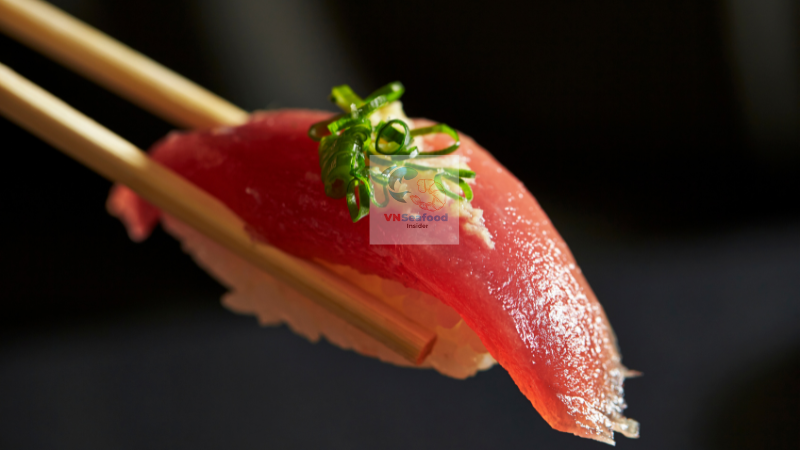
Outline
ToggleUnderstanding Tuna Grades and Quality
The difference between ordinary tuna and premium tuna cuts for sushi isn’t just marketing—it’s measurable in texture, color, fat content, and ultimately, price point. When Japan’s top sushi-grade tuna can fetch tens of thousands of dollars at auction, it becomes clear that quality assessment is both an art and a science.
Factors Determining Sushi-Grade Tuna
What exactly makes a tuna “sushi-grade”? While the term isn’t officially regulated in many countries, industry standards have established clear benchmarks:
Fat Content and Distribution: Often called “marbling” (similar to premium beef), the intramuscular fat provides both flavor and the melt-in-your-mouth texture that connoisseurs crave. The most prized cuts show consistent, fine streaks of fat throughout the meat.
Color and Clarity: Premium tuna cuts display vibrant, consistent coloring—ranging from deep red to pink depending on the species—without cloudiness or brown discoloration. The flesh should be translucent yet rich in hue.
Texture and Firmness: Quality tuna feels firm yet elastic to the touch. It should never appear mushy or excessively dry. When pressed lightly, the flesh should bounce back rather than remain indented.
Freshness Indicators: Beyond the obvious absence of fishy odors, premium tuna has a clean, oceanic scent. The surface should be moist but not slimy, with no signs of oxidation.
As one veteran sushi chef once told me, “You don’t just see great tuna—you feel it. It practically speaks to your hands.” This tactile knowledge comes with experience, but starting with these criteria gives you a solid foundation.
Vietnamese Tuna Processing Standards
Vietnam has emerged as a significant player in the premium tuna market, with processing standards that increasingly meet or exceed international expectations. The country’s tuna processing industry has undergone remarkable transformation in recent years.
Vietnamese processors now commonly implement:
- HACCP certification as a minimum standard
- EU, FDA, and FSSC 22000 compliance for export markets
- Cold chain management systems that maintain temperatures below -60°C for sashimi-grade tuna
- Rigorous testing for histamine levels and heavy metals
At VNSeafoodInsider, we’ve toured numerous Vietnamese processing facilities and observed the meticulous attention given to premium cuts. Many facilities now employ Japanese-trained quality inspectors who grade tuna using traditional methods alongside modern technology.
The combination of competitive pricing and increasingly stringent quality control makes Vietnamese sushi grade tuna an attractive option for importers looking to balance quality with profitability.
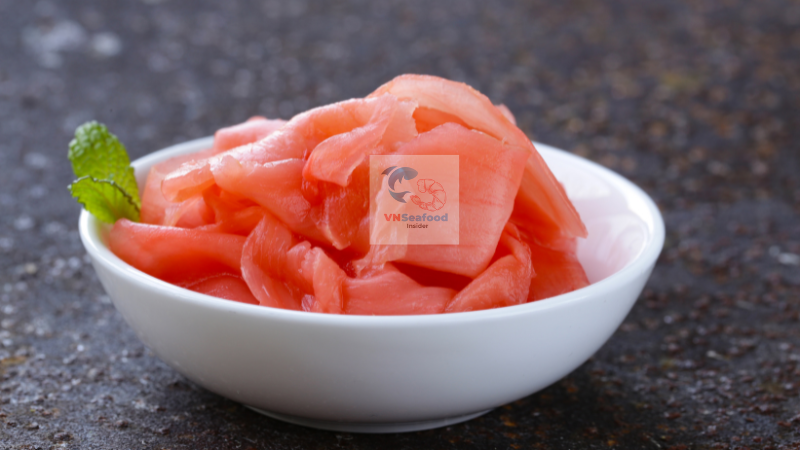
See more post: Vietnam Tuna Export Trends 2025: A Comprehensive Market Insight -> click here
Top Premium Tuna Cuts for Sushi and Sashimi
When chefs and consumers speak of premium tuna cuts for sushi, they’re often referring to specific portions of the fish that deliver optimal flavor, texture and visual appeal. Understanding these distinctions helps importers communicate effectively with both suppliers and customers.
Bluefin, Yellowfin, Bigeye Comparisons
Each tuna species offers distinct characteristics that appeal to different market segments:
Bluefin Tuna (Thunnus thynnus) – The undisputed king of sushi tuna, commanding the highest prices:
- Exceptionally high fat content, especially in the belly sections
- Deep red flesh with complex flavor profile
- Most prized cuts: otoro and chutoro (from the belly)
- Sustainability concerns have limited availability and increased prices
- Best suited for high-end establishments willing to pay premium prices
Yellowfin Tuna (Thunnus albacares) – The versatile middle-market option:
- Leaner than Bluefin but still flavorful
- Bright red color with firm texture
- More abundant and usually more affordable
- Excellent for restaurants offering quality sushi at accessible price points
- Vietnamese yellowfin is particularly noted for consistent quality
Bigeye Tuna (Thunnus obesus) – Often the connoisseur’s secret favorite:
- Higher fat content than Yellowfin but typically less expensive than Bluefin
- Deep red color with excellent flavor retention
- Becoming increasingly popular in premium markets
- Offers excellent value proposition for quality-conscious importers
As one Los Angeles-based importer quipped to me, “Bluefin gets the headlines, but Bigeye pays the bills.” This perfectly captures the practical reality many importers face: balancing prestige with profitability.
Recommended Cuts and Preparation Techniques
Beyond species selection, understanding specific cuts dramatically increases your value as an importer:
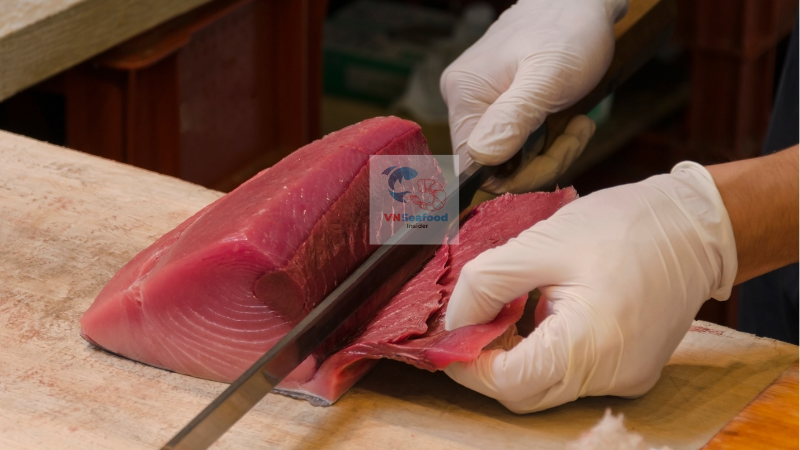
Akami (Red Meat) – From the top back portion:
- Leaner with deep red color
- Lower price point but still essential for balanced sushi menus
- Excellent entry-level sashimi option
Chutoro (Medium-Fatty Tuna) – From the middle belly area:
- Moderate fat content with pink-red coloration
- Balanced flavor profile appealing to most consumers
- Increasingly popular as top-grade otoro becomes prohibitively expensive
Otoro (Premium Fatty Tuna) – From the lowest belly section:
- Highest fat content with distinctive marbling
- Melts in the mouth with intense, buttery flavor
- Commands highest prices and prestige
- Limited quantity per fish makes sourcing challenging
Saku Blocks – Standardized rectangular blocks:
- Consistent portioning for restaurants
- Typically cut from the loin
- Facilitates precise inventory management
- Increasingly preferred format for many commercial kitchens
The preparation and handling of these cuts require specific expertise. When importing premium tuna cuts for sushi, we recommend partnering with processors who understand proper bleeding techniques, precise temperature control, and appropriate aging methods when applicable.
See another post: Yellowfin Tuna Cube: The Versatile Gem of Seafood Cuisin
Sourcing High-Quality Tuna from Vietnam
Vietnam’s strategic location in the Western Pacific provides access to rich tuna fishing grounds, while its developed processing infrastructure creates a compelling value proposition for importers seeking quality and competitive pricing.
Export Processing Capabilities
Vietnam’s tuna processing sector has evolved significantly over the past decade, now offering capabilities that rival traditional tuna powerhouses:
- Advanced Flash-Freezing Technology: Many Vietnamese facilities utilize temperature-controlled processing rooms and ultra-low temperature freezers maintaining -60°C or lower—essential for preserving sashimi-grade quality.
- Customized Cutting and Portioning: Processors can produce everything from whole loins to precisely portioned saku blocks, customized to importer specifications.
- Value-Added Processing: Beyond basic cuts, facilities offer specialized services including superfreezing, treatment for color preservation, vacuum-packing, and MAP (modified atmosphere packaging) technology.
- Scale and Reliability: Leading Vietnamese processors handle substantial volume, ensuring consistent supply chains even during seasonal fluctuations.
During the facility tours, we’ve been particularly impressed by the integration of traditional handcraft with modern technology. In one facility outside Da Nang, we observed master cutters with 20+ years of experience working alongside state-of-the-art Japanese freezing systems—a perfect marriage of tradition and innovation.
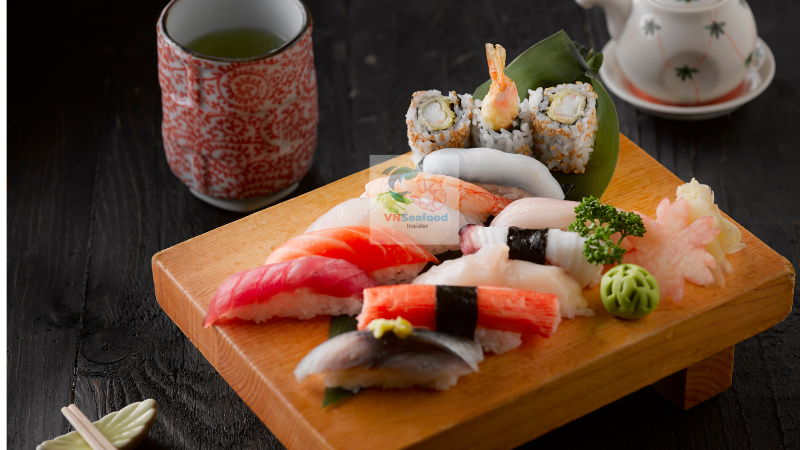
Quality Control Measures
Vietnam’s commitment to quality control for tuna exports includes:
- Traceability Systems: Leading processors implement comprehensive catch-to-consumer tracking systems that document each step of the supply chain.
- Testing Protocols: Regular testing for histamine levels, heavy metals, and microbiological contaminants exceeding most importing countries’ requirements.
- Certification Standards: Major facilities maintain multiple certifications including HACCP, BRC, IFS, FSSC 22000, and MSC Chain of Custody.
- Temperature Monitoring: Continuous temperature logging throughout processing and transportation, with data available to importers.
As one processor of Premium Tuna Cuts for Sushi explained to us, “We’re not just competing on price anymore—we’re competing on quality. Every shipment represents Vietnam’s reputation in the global market.”
For importers new to Vietnamese sourcing, we recommend starting with processors certified for your target market and requesting sample shipments before committing to larger orders. The initial quality assessment investment pays dividends in customer satisfaction and reduced claims.
Market Trends in Sushi Tuna Imports
The global market for premium tuna cuts for sushi continues to evolve, influenced by changing consumer preferences, sustainability concerns, and economic factors. Staying ahead of these trends provides importers with strategic advantages.
Sustainability Certification Becoming Essential
Consumers increasingly demand sustainable seafood options, making certifications like Marine Stewardship Council (MSC) and Aquaculture Stewardship Council (ASC) increasingly valuable. We’ve observed that restaurants and retailers featuring certified sustainable tuna can command premium prices while building consumer trust.
The challenge for importers lies in balancing sustainability with pricing pressures. Vietnamese processors have responded by improving traceability systems and working with international conservation organizations to implement responsible fishing practices, particularly for yellowfin tuna.
Premium Frozen Gaining Acceptance
While “fresh” once dominated the premium market, advanced freezing technology has dramatically changed perceptions. Many high-end sushi restaurants now prefer properly superfrozen tuna (-60°C or lower) over “fresh” tuna that may be several days old. This shift creates opportunities for importers to source from further locations while maintaining quality.
As one innovative San Francisco sushi chef told us, “The best ‘fresh’ fish I serve was frozen minutes after catch. My customers can taste the difference, even if they don’t understand the technology behind it.”
Growth in Direct-to-Consumer Channels
The pandemic accelerated consumer comfort with preparing sushi at home, creating new market segments for premium tuna cuts in retail and e-commerce channels. Importers who can provide consumer-friendly packaging, portion sizes, and educational content are finding success in this growing segment.
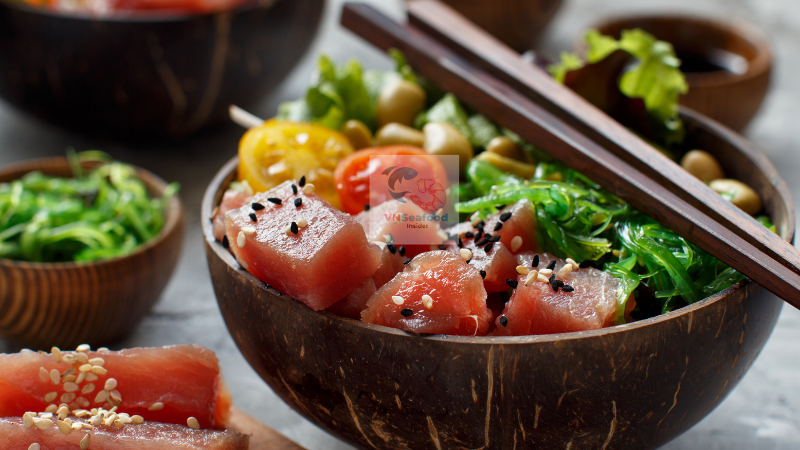
Vietnamese processors have responded with retail-ready packaging options designed for the home chef, including portioned saku blocks with cooking instructions and QR codes linking to preparation videos.
See other post: Top 6 Vietnam Seafood Export Products 2024 – Market Insights and Trends 2025
Diversification Beyond Traditional Cuts
While otoro and chutoro remain prized for traditional nigiri sushi, innovative chefs are exploring new applications for different cuts. Tuna collar, once considered a secondary product, now appears on trendy izakaya menus, while tuna heart is finding niche markets among adventurous diners.
For importers, this trend creates opportunities to maximize value from each fish by finding markets for traditionally overlooked cuts.
Building Your Premium Tuna Import Strategy
Successfully importing premium tuna cuts for sushi requires balancing quality, consistency, sustainability, and price—no small feat in today’s competitive market. At VNSeafoodInsider, we believe Vietnamese processors offer compelling options for importers at various market positions.
Whether you’re supplying high-end Japanese restaurants demanding the finest bluefin or casual sushi spots seeking reliable yellowfin, developing strong relationships with processors who understand your specific requirements is essential. The premium tuna market rewards knowledge, attention to detail, and the ability to communicate quality differences to your customers.
As you develop your import strategy, remember that today’s consumers care not just about the end product but the entire journey from ocean to plate. Importers who can tell this story authentically—highlighting quality, sustainability, and craftsmanship—will find themselves well-positioned for success in this demanding but rewarding market.
For personalized guidance on sourcing premium tuna cuts for sushi from Vietnam, contact VNSeafoodInsider for consultation services tailored to your business needs.
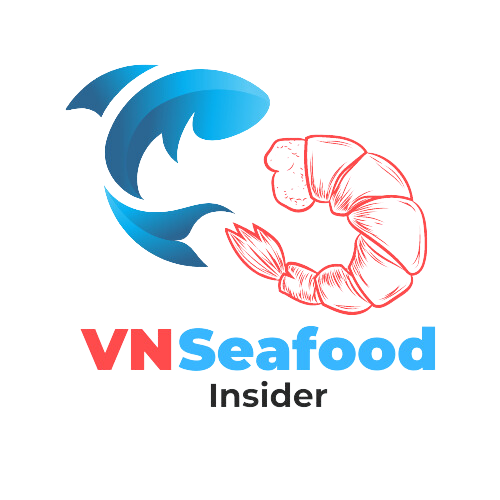
Pingback: Tuna Export Supply Chain Crisis: Vietnam's 2025 Regulations